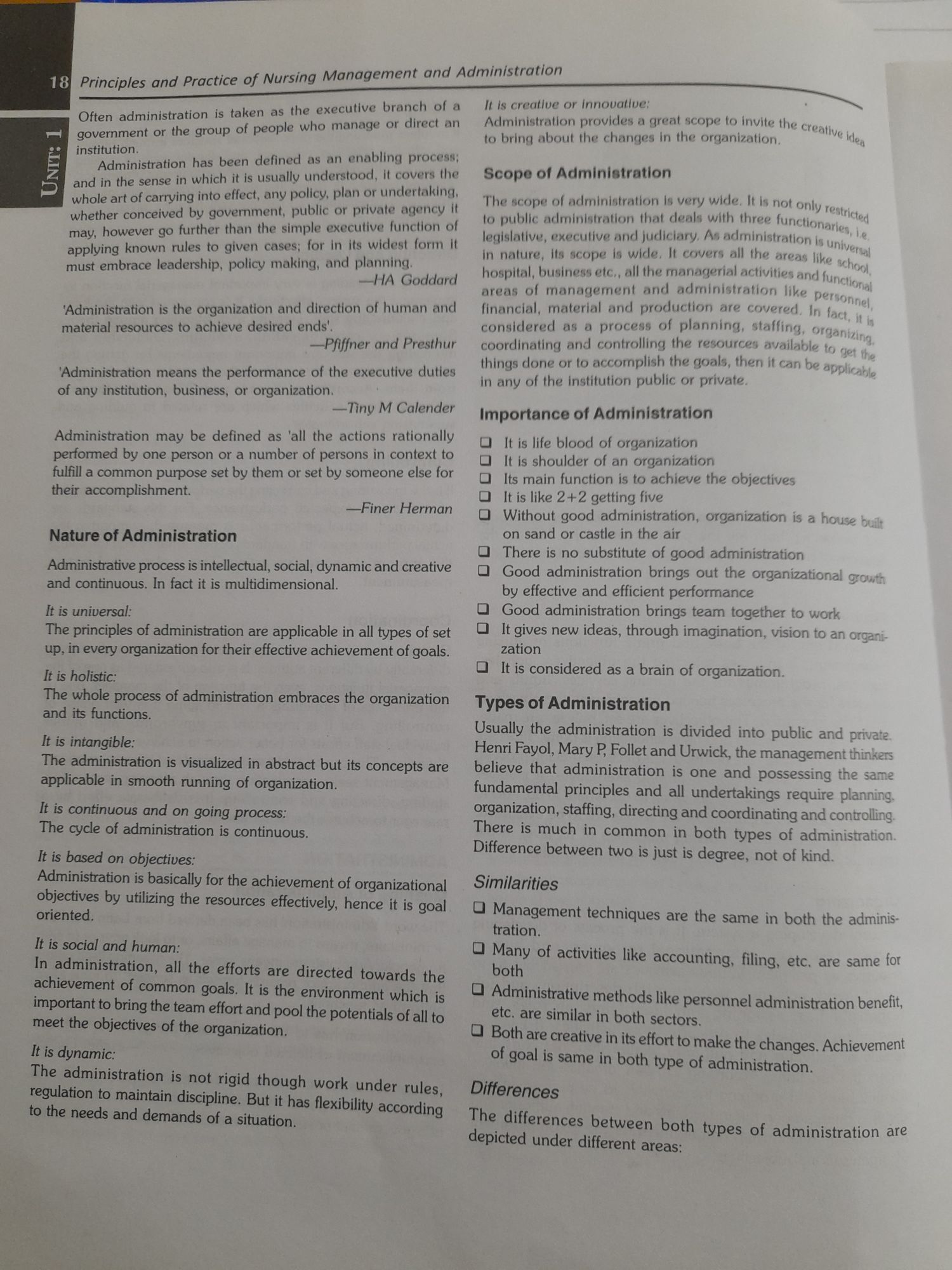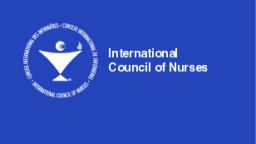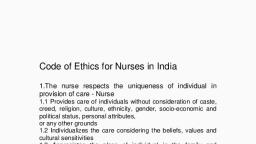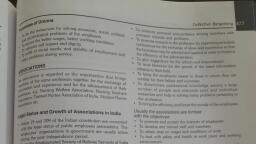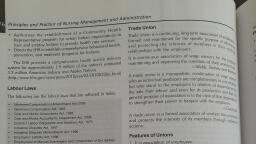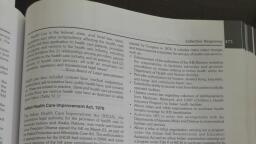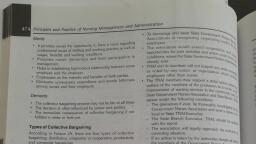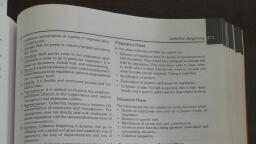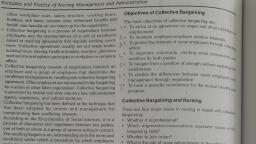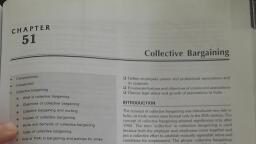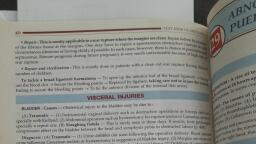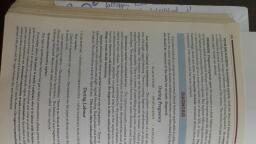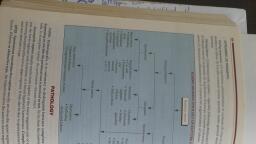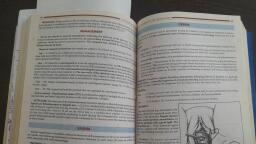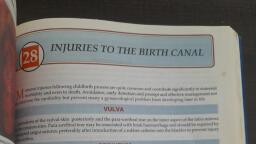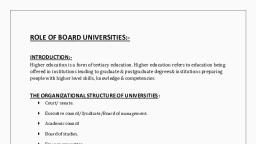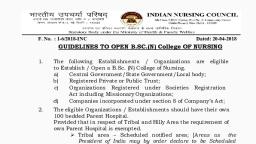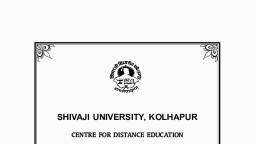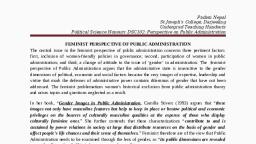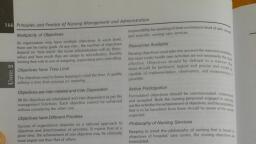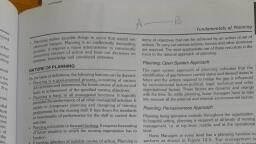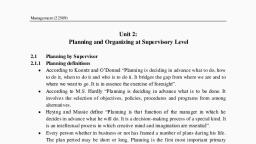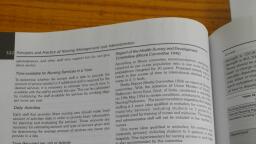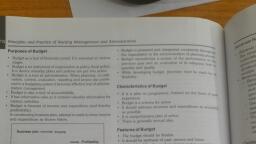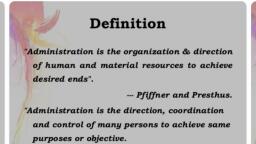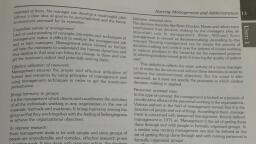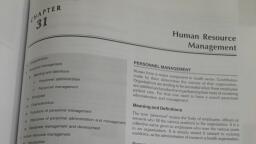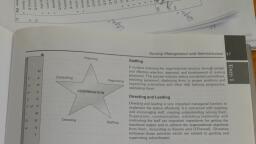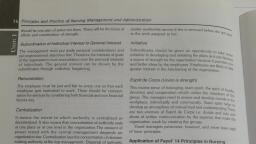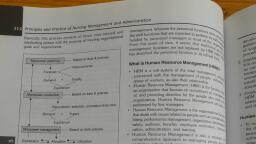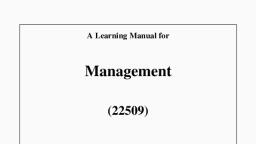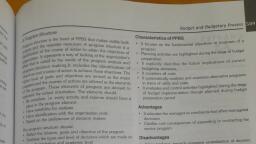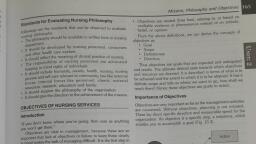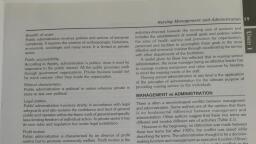Page 1 :
tive branch of a, or direct an, , , , Often administration is taken as the execu :, government or the group of people who manage, , Sahin:, Dae enabling process;, , Administration has been defined as an, and in the sense in which it is usually understood, it covers the, whole art of carrying into effect, any policy, plan or undertaking,, whether conceived by government, public or private agency It, may, however go further than the simple executive function of, applying known rules to given cases; for in its widest form it, , must embrace leadership, policy making, and planning., —HA Goddard, , , , ‘Administration is the organization and direction of human and, material resources to achieve desired ends'., , —Pfiffner and Presthur, ‘Administration means the performance of the executive duties, , of any institution, business, or organization,, —Tiny M Calender, , Administration may be defined as ‘all the actions rationally, performed by one person or a number of persons in context to, fulfill a common purpose set by them or set by someone else for, , their accomplishment., —Finer Herman, , Nature of Administration, , Administrative process is intellectual, social, dynamic and creative, and continuous. In fact it is multidimensional., , It is universal:, The principles of administration are applicable in all types of set, up, in every organization for their effective achievement of goals., , It is holistic:, The whole process of administration embraces the organization, , and its functions., , It is intangible:, , The administration is visualized in abstract but its concepts are, applicable in smooth running of organization., , It is continuous and on going process:, The cycle of administration is continuous,, , It is based on objectives:, , Administration is basically for the achievement of organizational, objectives by utilizing the resources effectively, hence it is goal, oriented., , It is social and human:, , In administration, all the efforts are directed towards the, achievement of common goals. It is the environment which is, important to bring the team effort and pool the potentials of all to, meet the objectives of the organization,, , It is dynamic:, The administration is not ri, , d it igid though work under rules, regulation to maintain discipline. But it has flexibility rae ;, to the needs and demands of a situation, :, , , , Principles and Practice of Nursing Management and Adminis, , tration, , It is creative or innovative,, Administration provides a great scope to invite the eve :, , i Alive jg, to bring about the changes In the organization Ido, , Scope of Administration, , The scope of administration is very wide. It is not ONly regs, , to public administration that deals with three functionay,., legislative, executive and judiciary, As administration | a, , in nature, its scope is wide, It covers all the areas |i), os, hospital, business ete,, all the managerial activities and , om, areas of management and administration like Perso, financial, material and production are covered. {ny (,,, considered as a process of planning, staffing, coordinating and controlling the resources avail, things done or to accornplish the goals, then it can be ay, in any of the institution public or private, , , , , Importance of Administration, , Q It is life blood of organization, , Q It is shoulder of an organization, , Its main function is to achieve the objectives, , It is like 2+2 getting five, , Without good administration, organization is a house, , on sand or castle in the air, , There is no substitute of good administration, , Good administration brings out the organizational crows, by effective and efficient performance ;, Good administration brings team together to work, , It gives new ideas, through imagination, vision to an orcar, zation :, It is considered as a brain of organization., , Pee) Ce eae) oo, , Types of Administration, , Usually the administration is divided into public and p, Henri Fayol, Mary P Follet and Urwick, the managemen’, believe that administration is one and Possessing, fundamental principles and all undertakings require p, organization, staffing, directing and coordinating and co, There is much in common in both types of administratio, Difference between two is just is degree, not of kind, , , , , , , , , , Similarities, , Q Management techniques are the same in both the administration., , Q Many of activities like accounting, filing, etc, are same for, both, , Q Administrative methods like personnel administration benefit,, etc. are similar in both sectors., , Q Both are Creative in its effort to make the changes. Achievement, of goal is same in both type of administration., , Differences, , The differences betw., een both types of administration are, depicted under different areas: i —
